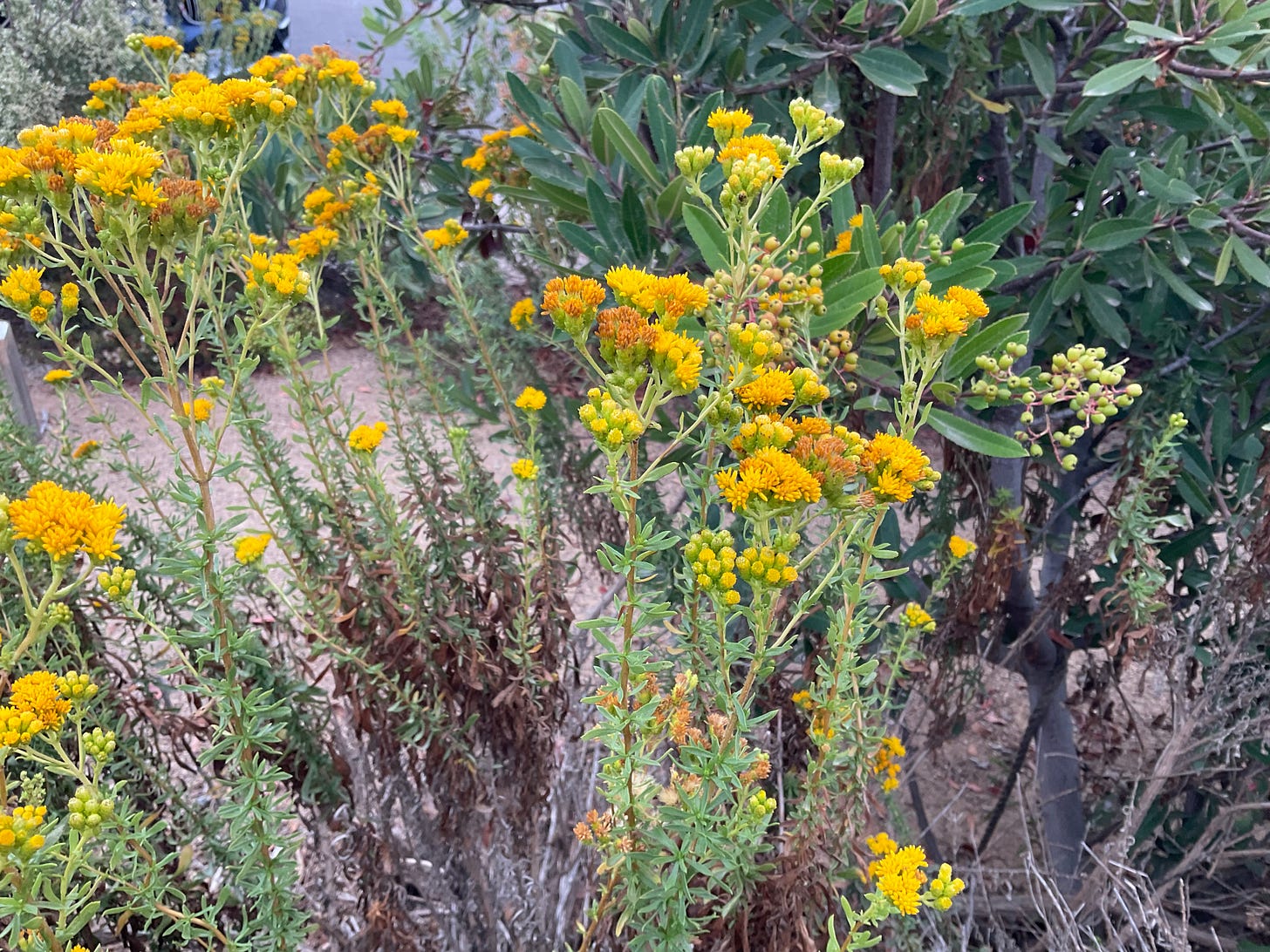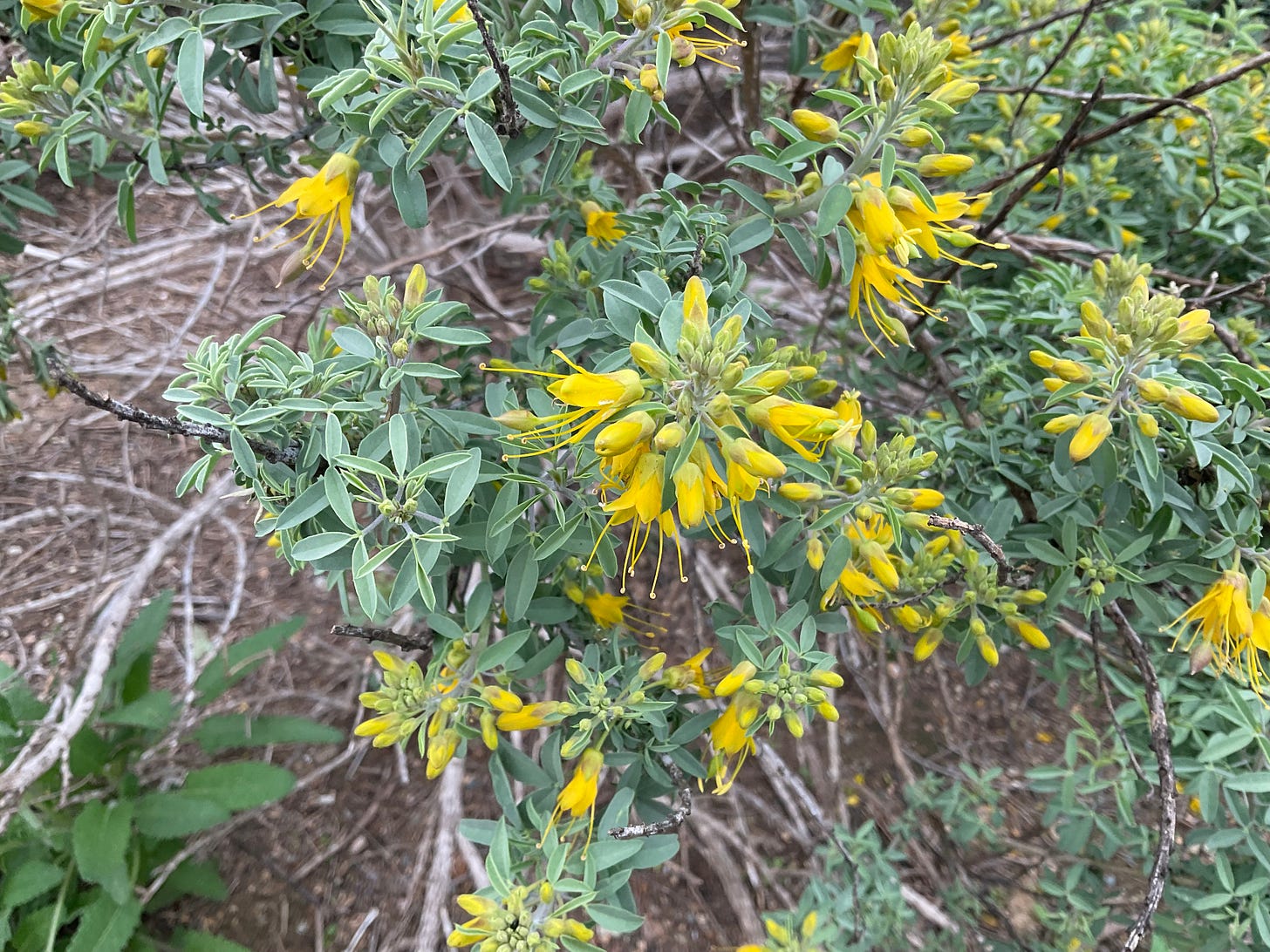In touch: coastal sage scrub
New science holds promise in preserving this endangered plant community.
I hope you all had a joyous Christmas, and I hope the rest of Hanukkah, Kwanzaa, and other year-end holidays bring joy as well. Recently, when I asked readers what types of Green Dispatch posts they like the most,
, who writes about environmental success stories at EarthHope, said she likes the “In Touch” series, in which I write about the rare and endangered plants I work with here in Southern California.I’ve previously written about specific species, but here I’d like to look at an entire plant community, the total biome that I concentrate on and the native landscape I foster at work: coastal sage scrub.
Coastal sage scrub was once the dominant plant community that blanketed much of coastal Southern California. Up to 70 percent of the coastal sage has been lost, paved over to make room for houses, schools, and shopping malls. We have also replaced a great deal of this landscape with lawns and other exotic plants brought from such places as Australia and southern Africa. Most of the remaining coastal sage scrub hangs on in small, isolated patches found from Morro Bay in the California central coast down to the border with Mexico.
As you might guess, sages dominate this plant community, and a hike through coastal sage scrub can be a sweet-smelling venture. Besides black sage and white sage, California coastal sage is a common member of this biome. Other plants include bladderpod, California (or flat-top) buckwheat, California sunflower, and San Diego sunflower. Three larger evergreen plants found among the sages are toyon, lemonade berry, and laurel sumac. And four or five cactus species live only in this plant community.
Birds and other animals that make their homes in coastal sage include California towhees, thrashers, wood rats, fence lizards, and alligator lizards. A number of snakes, including rattlesnakes, also live in this biome. The endangered California gnatcatcher lives only in coastal sage.
New Science
Published just a little over a week ago, a new paper describes a novel approach to saving this imperiled plant community.
Besides the problem of humans paving over much of the coastal sage scrub, invasive, nonnative plants, particularly exotic grasses, have replaced acre after acre of coastal sage. Almost all coastal sage scrub has been invaded by at least some exotic species.
Nonnative grasses crowd out natives. As they die, their remains turn into thatch that can further crowd out natives. The thatch can also prevent the seeds of native plants from reaching the ground and germinating.
Researchers from the University of California, Riverside, chose a site in Riverside County that is now dominated by ripgut brome—a Mediterranean grass—and other nonnative grasses. They chose a number of experimental plots and control plots. In the experimental plots, they raked the litter left by grasses in the fall. They did not remove any of the grasses to avoid disturbing the soil. They just raked. That’s it. They raked twice, once in the fall of 2021 and once in 2022. Control plots were left unraked.
Even by the spring of the first year (2022), the raked plots had a return of native plants among the grasses. The downside is that other nonnative shrubs also showed up in the raked plots.
Restoration is complicated, and this raking treatment is no silver bullet. The nonnative shrubs that returned to the raked grasslands can be as problematic as the grasses. Nonetheless, the raking method is simple and easy, which might make it a good procedure to undertake along with other restoration strategies.

Other techniques for controlling exotic grasses can have serious disadvantages. Controlled burns can become uncontrolled and endanger nearby communities. Hand-weeding is labor intensive and can disrupt soil. Herbicides can have secondary effects on non-targeted flora and fauna. In comparison, the raking technique is safe and simple.
If you’re interested in seeing coastal sage, some sections of Torrey Pines State Reserve contains this plant community in quite pristine condition. Other areas of San Diego, such as Florida Canyon in Balboa Park and Tecolote Canyon contain somewhat degraded coastal sage scrub that has been invaded by grasses and other nonnatives.
Universities, Southern California municipalities, the U.S. Forest Service, local nonprofits, and individuals work to restore our coastal sage. We will never get rid of grasses and other invasives; this is an ongoing and never ending battle. But as someone who has spotted thrashers among the coastal sage shrubs, who has chanced across the dense piles of woodrat dens, and one who has breathed in the sweet aroma of Southern California’s sages, I know it is worth all the effort.
You can find me on social media at: paul4earth.bsky.social








Thanks Paul for this on my favorite biome. You didn’t mention Salvia clevelandii???
Raking is an interesting idea but I must disagree about hand weeding if done properly; with a trowel or small shovel, the soil can be loosened and the weed root removed intact with minimal soil disturbance. Of course, this works best after a rain. This is labor intensive but with good volunteers, it’s amazing how much ground can be covered. When I worked at RSABG, we had wonderful volunteers that helped me get mustard and exotic grasses under control.
Thanks for sharing. Great to find out more about this type of habitat.